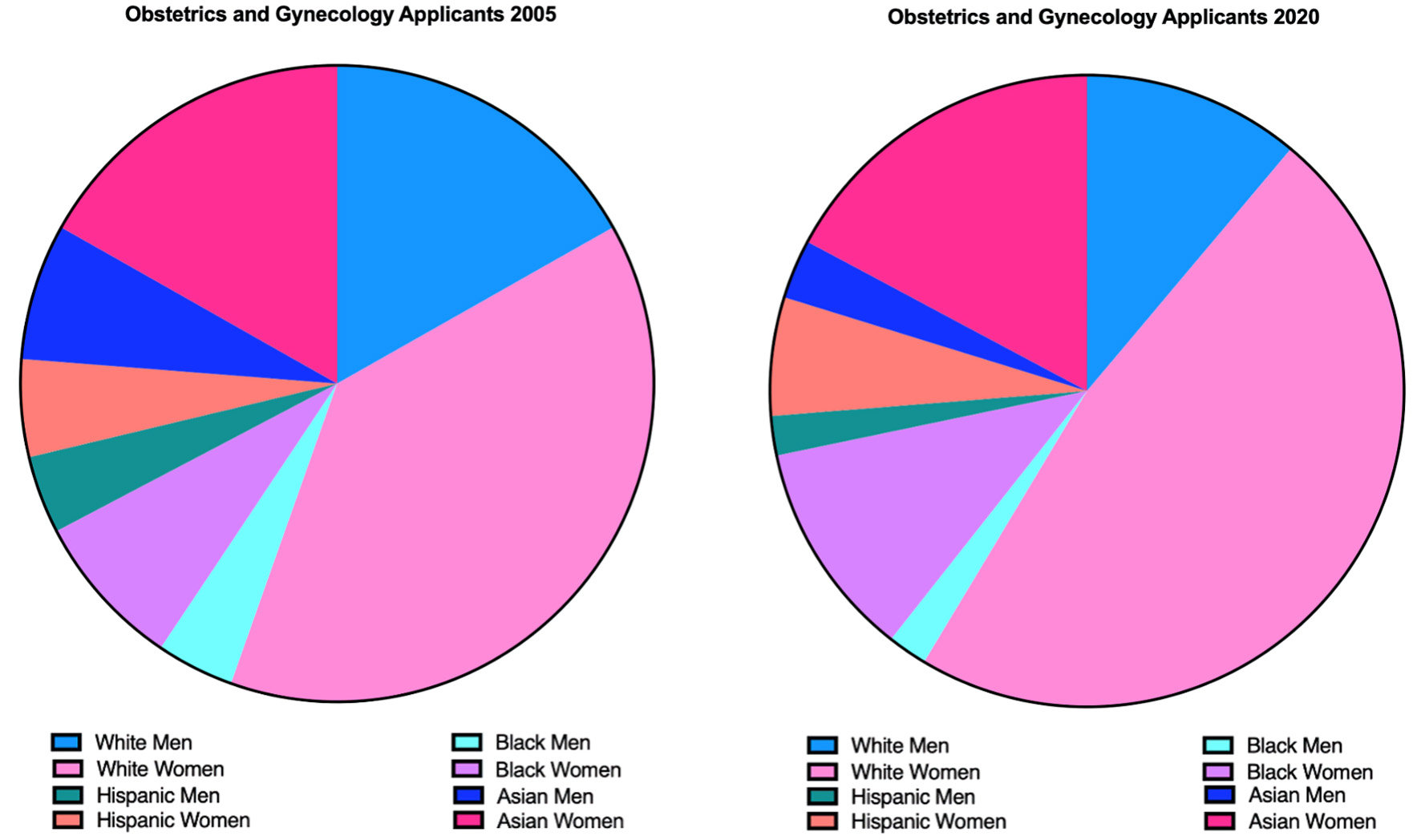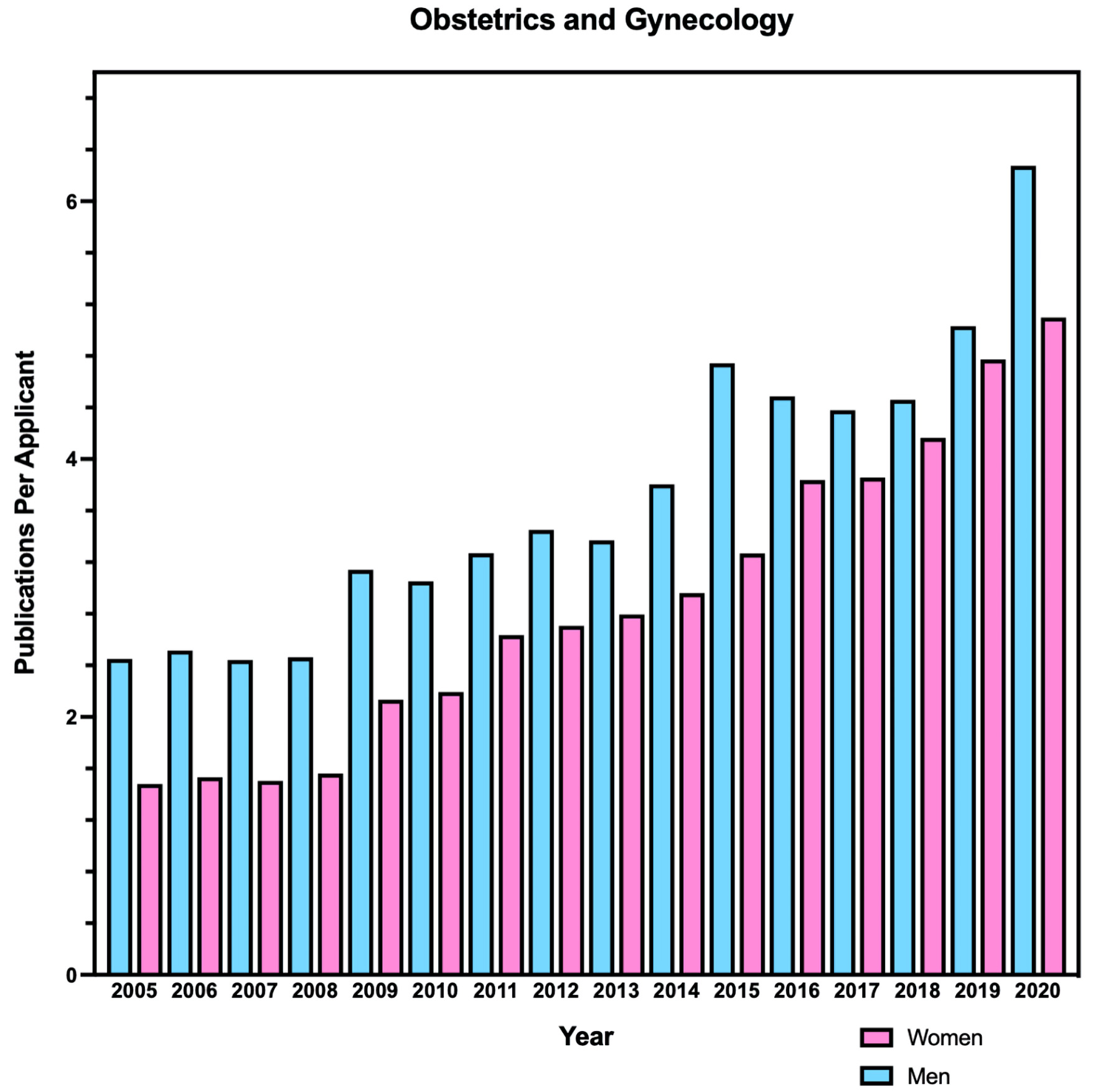
Figure 1. The yearly proportion of self-identified men and women applicants to Obstetrics And Gynecology residency from 2005 to 2020.
| Journal of Clinical Gynecology and Obstetrics, ISSN 1927-1271 print, 1927-128X online, Open Access |
| Article copyright, the authors; Journal compilation copyright, J Clin Gynecol Obstet and Elmer Press Inc |
| Journal website https://www.jcgo.org |
Original Article
Volume 13, Number 3, December 2024, pages 75-82
Racial and Gender Disparities in Obstetrics and Gynecology Applicants and Professionals
Figures





Tables
| Males | Females | White males | White females | Asian males | Asian females | Black males | Black females | Hispanic males | Hispanic females | |
|---|---|---|---|---|---|---|---|---|---|---|
| 2005 | 35% | 65% | 17% | 39% | 7% | 17% | 4% | 8% | 4% | 6% |
| 2020 | 20% | 80% | 11% | 47% | 3% | 17% | 2% | 11% | 2% | 6% |
| White | Asian | Black | Hispanic | |
|---|---|---|---|---|
| Female | 35% | 33% | 21% | 25% |
| Male | 34% | 34% | 23% | 27% |